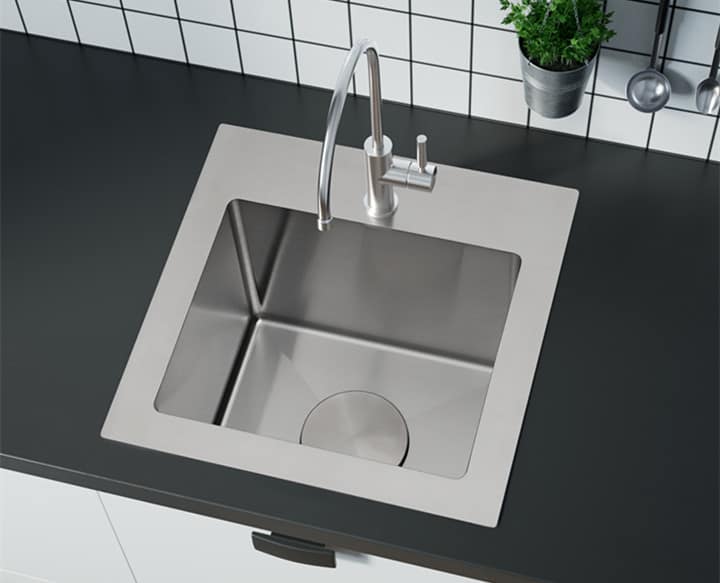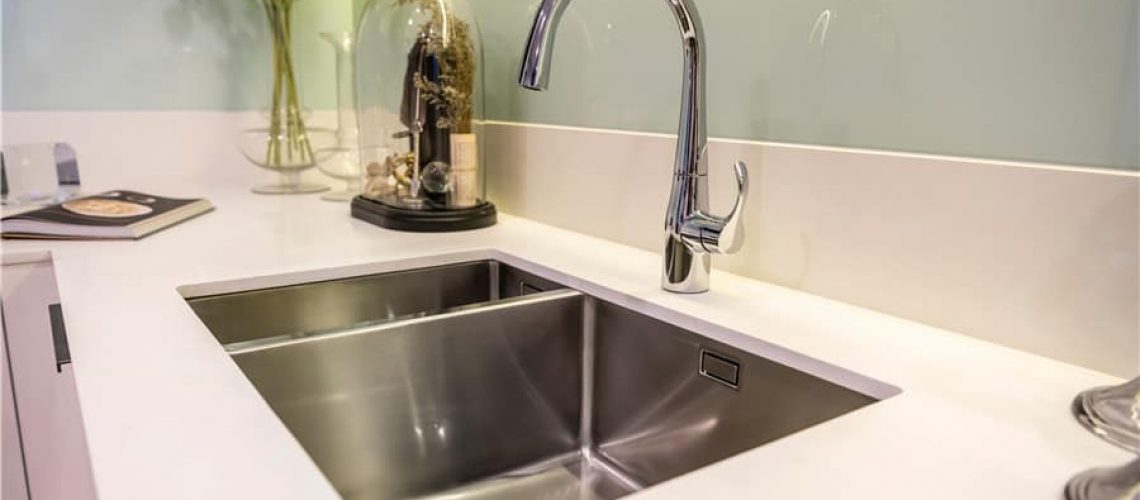Suelen existir dos tipos de lavabos en el mercado de equipamiento sanitario que han ganado mucha popularidad con el paso de los años: los fregadero hecho a mano y el lavabo dibujado.
Cada uno de ellos tiene sus especificaciones y puntos de venta únicos, y estamos aquí para contárselo todo.
Si no conoces estos dos tipos de lavabos, no tienes de qué preocuparte. Lo tenemos cubierto.
¿Cuál es la diferencia entre ellos?
Las principales diferencias entre estos dos fregaderos son su proceso de fabricación y función. Algunos puntos esenciales se relacionan con las diferencias entre ambos lavabos; estos se mencionan más adelante.
¿Dónde se utilizan habitualmente?
Ambos fregaderos se utilizan principalmente en espacios de cocina; sin embargo, no es una regla estricta colocarlos en el escenario de su cocina. También puedes usarlos en otros lugares.
La gente también usa estos lavabos en espacios al aire libre, como lavabos de césped y lavabos de callejón. La mejor característica de ellos es que son flexibles y se adaptan adecuadamente al entorno en el que se encuentran.
Especificaciones de Fregaderos Hechos y Dibujados a Mano.
Ambos lavabos tienen sus especificaciones y sus propósitos. Empezando primero por los lavabos hechos a mano:
Fregaderos hechos a mano
Fregaderos hechos a mano se fabrican utilizando una técnica de producción diferente. Esta técnica requiere mucha mano de obra y más habilidad en comparación con otras técnicas de producción.

En este método de producción, los fregaderos son presionado con las manos, y las esquinas de esos lavabos son más tarde soldado juntos. Por eso reciben el nombre de fregaderos hechos a mano.
Material
Los fregaderos hechos a mano están construidos con láminas de acero inoxidable. Sin embargo, la calidad del acero inoxidable depende de la empresa a la que se le compra.
Un fregadero de acero inoxidable de alta calidad costará más que uno de calidad mediocre.
El acero inoxidable es una excelente opción para los lavabos. Este material destaca por el uso rudo y tiene una mayor durabilidad.
Además, el material de acero inoxidable es más fácil de soldar y fabricar en cantidades significativas. Por eso la industria sanitaria suele utilizar material de acero inoxidable.
También hay otros materiales presentes, como el hierro fundido. Estos fregaderos aportan mucha más durabilidad; sin embargo, pueden resultar costosos.
Forma y profundidad
La forma de los lavabos hechos a mano suele ser rectangular o cuadrada con cuatro esquinas soldadas. La empinada profundidad de 10 pulgadas proporciona un amplio espacio para diversos fines.
Los fregaderos se utilizan sobre todo en cocinas, y con este tipo de profundidad se puede guardar una buena cantidad de vajilla en el lavabo.
Espesor
El fregadero hecho a mano espesor se encuentra en 1,2 a 1,5 mm. Este espesor es el estándar básico de la industria de los fregaderos hechos a mano, el hecho de que es relativamente delgado; por lo tanto, no se puede estirar como sus homólogos.
Si el fregadero se estira durante el proceso de producción más de lo que puede soportar, sin duda se romperá.
Procesamiento de fabricación
Los lavabos hechos a mano se fabrican mediante tecnología de soldadura láser. De ahí que la placa y el equipo suelen ser de mejor calidad.
La soldadura se basa en estándares de alta calidad, lo que puede resultar extremadamente duradero.
Mantenimiento
Uno de los problemas más comunes; Lo que experimentan todos los usuarios de fregaderos hechos a mano es el mantenimiento de un fregadero hecho a mano.
El fregadero seguramente ofrece una gran profundidad y espacio adicional para su uso, pero con eso, también requiere un esfuerzo adicional para su limpieza y mantenimiento.
Una cosa importante que hay que entender aquí es que el lavabo del fregadero hecho a mano es plano.. No tiene pendiente hacia el desagüe que está presente en un fregadero.
Esto significa que el fregadero no drenará automáticamente el agua después de su uso.
Para evitar daños y manchas de agua, deberá limpiar y limpie el lavabo después de cada uso. Es posible que también tengas que deshacerte de los pequeños restos que suelen quedar en el lavabo.
Para saber más sobre cómo mantener sus fregaderos de la manera correcta, puede hacer clic aquí y mira este artículo.
Fregaderos dibujados
El fregadero dibujado es el tipo más común de fregadero que se utiliza en En los hogares estadounidenses, el fregadero existe desde hace bastante tiempo, y lo mejor de (este fregadero) es que está disponible en muchas variantes y también se puede fabricar con especificaciones personalizadas.

Material
Los fregaderos elaborados utilizan el mismo material que los fregaderos hechos a mano, acero inoxidable. La diferencia básica entre ambos viene en el proceso de fabricación y el diseño.
El material del fregadero elaborado definitivamente proporcionará las mismas cualidades que el fregadero hecho a mano, que incluye brillo, durabilidad y resistencia a las manchas.
Forma y profundidad
La forma del lavabo dibujado suele ser una forma ovalada. El fregadero tiene bordes redondeados con un área de esquina de mayor radio.
Esta área más grande reduce el tamaño del fregadero dibujado en comparación con el fregadero hecho a mano, que tiene esquinas soldadas.
La profundidad del fregadero dibujado suele ser de 9 pulgadas. Esta es la tarifa estándar; sin embargo, algunas empresas podrían tener sumideros más profundos. De manera similar, algunos podrían ir con menos profundidad.
Espesor
La forma correcta de medir el espesor de un fregadero es la lectura del "medidor" que se menciona en el fregadero. Sin embargo, el grosor de un fregadero embutido en términos simples varía de una empresa a otra.
El espesor promedio estándar de la industria de un fregadero estirado es de 1,5 mm o más. En comparación con los fregaderos hechos a mano, este precio es un poco más alto.
El grosor del fregadero proporcionará mayor durabilidad frente al uso y una vida útil más larga de lo que se podría esperar de un fregadero de diseño más delgado.
Aparte de eso, el grosor de un fregadero también ayuda a reducir el ruido de los platos y cubiertos cuando se lavan.
Proceso de manufactura
El proceso de fabricación de un lavabo dibujado es completamente automatizado. Es intensivo en capital, y esa es una de las principales razones por las que el fregadero dibujado suele venderse a un precio más económico que el fregadero hecho a mano.
La fabricación de este fregadero la realiza prensado de una hoja de acero inoxidable by machine. The machine presses the sheet and gives it a specific shape. There is no need to weld the corners or join them together because of the predetermined shapes that are made through the usage of machines.
This is one of the reasons why pressed sinks are available in a greater amount of variants and custom shapes.
Mantenimiento
The maintenance of a drawn sink does not require any extra effort. The sink is steep, and the body is designed in such a way that conveys the water towards the drain.
However, it might be good that you take care of it by regularly cleaning it by swiping the surface.
This way, it will stay intact for a longer period of time and also maintain its shine!
Fill in this form to request a quick quote from Chica
¿Cómo inspeccionar un fregadero hecho a mano?
para inspeccionar un fregadero hecho a mano, hay varias reglas diferentes que debes tener en cuenta. Comience inspeccionando las esquinas. Deben tener un borde de tiburón o, en algunos casos, bien redondeados, y luego puedes mirar las esquinas soldadas.
Asegúrese de que no haya color amarillento en el área de soldadura porque eso significa que no se ha soldado correctamente y podría poner en peligro la calidad del fregadero.

¿Cuál es mejor?
No hay comparación entre esos dos sumideros. A nivel del consumidor, todo depende de cuáles sean las preferencias de un solo consumidor.
A veces la gente suele preferir el fregadero dibujado y otras veces se inclina por el fregadero hecho a mano.
Sin embargo, los lavabos dibujados se suelen utilizar en espacios e interiores modernos, y son totalmente regulables y adaptables a diferentes tipos de ambientes de cocina.
Por otro lado, el fregadero hecho a mano es una opción más cara que aporta sabor y gracia a tu cocina.
Estos fregaderos brindan un fácil acceso en uso y brindan un diseño sublime al ambiente de su cocina.
Resumen rápido
| Fregadero hecho a mano | fregadero dibujado |
| Esquinas hechas a mano y soldadas. | Chapa de acero prensada automatizada |
| El espesor es de 1,2 a 1,5 mm como máximo. | El espesor es de 1,5 mm y más. |
| Generalmente 10 pulgadas de profundidad. | Generalmente 9 pulgadas de profundidad. |
| Más espacioso | Menos espacioso |
| Requiere más esfuerzos de mantenimiento. | No requiere mucho mantenimiento |
Epílogo
A medida que avanzamos hacia la próxima era tecnológica, existe una gran posibilidad de que estos modelos de fregaderos sean reemplazados por versiones mejores y más nuevas.
Hasta entonces, estos dos lavabos tienen sus propias especificaciones y cualidades, que conviene valorar en todos los sentidos.
Sin embargo, no importa cuánto avancemos, siempre puede haber un mercado para fregaderos hechos a mano debido al hecho de que algunas personas prefieren y aprecian un producto hecho a mano.
Por otro lado, es posible que veamos algunos nuevos desarrollos con respecto a la automatización en la industria de los fregaderos, que seguramente producirá fregaderos más nuevos e improvisados a un precio más bajo.
Esperamos que esto te haya ayudado a comprender la diferencia entre un fregadero hecho a mano y un fregadero dibujado.











1 pensamiento en “Fregadero hecho a mano VS fregadero dibujado”
Pingback: ¿Cómo se fabrican los fregaderos de acero inoxidable (estirado)? - Chica Dragon